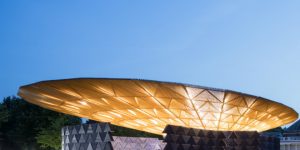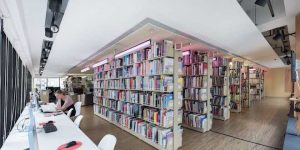Interview with Singapore Art Museum curator Louis Ho on the Singapore Biennale 2016
With the Singapore Biennale 2016 coming to a close in the next few days, we take a look at what goes on behind the scenes with an individual who is a part of the curatorial team

A lot of work, time and effort goes into planning an event such as the Singapore Biennale 2016. Thanks to months of planning, the event brings us numerous artists and their creations that highlight the artistic talent in Asia. One such individual, who makes the selection that we have enjoyed, is none other than Louis Ho who is a Curator at the Singapore Art Museum. We seek him out to find out more about his favourite artists who are featured in the Singapore Biennale 2016 and the challenges faced by the team in selecting the various works.
Can you tell us a bit more about your role at the Singapore Biennale 2016?
My areas of focus at the Singapore Art Museum are centred on Malaysia, Brunei and Myanmar. These interests correspond with my part in the nine-member curatorial team of the Singapore Biennale 2016. An artist that I have selected, for instance, is Faizal Hamdan from Brunei. It is the first time in the decade-long history of the Singapore Biennale that we are featuring a participating artist from that country.
How does the team decide what to showcase at the Biennale?
In regards to the 2016 edition, we elected to have a smaller curatorial team as compared to the previous Biennale. This provided more room for engagement through conversations between all involved. The Singapore Art Museum team met up with our team of Associate Curators (from China, India, Malaysia and Singapore) over a series of curatorial workshops held in Singapore, where we worked through ideas, artists, artwork proposals, sites, themes and curatorial narratives.

Phasao Lao and Tcheu Siong at the Singapore Art Museum
What are your favourite works at the Biennale and why?
The set of embroidered textiles by the Hmong husband-and-wife duo, Phasao Lao and Tchieu Siong, are particularly interesting objects for me. They might seem to belong better in an anthropological museum, but it’s perhaps high time for a broader conversation on the possibilities of Southeast Asian visual culture, which would embrace a far wider range of visual objects and producers, rather than just art.
What are some of the challenges the team faced in putting together Singapore Biennale (it’s a massive event!)
A creative collaboration almost always presents certain hurdles. The scale of the undertaking, of course, was the biggest challenge, but the diversity of the make-up of the curatorial team – we all hailed from different countries and backgrounds, representing a range of artistic and intellectual interests – also made for some lively discussions !
Tell us about your first exhibition for the Singapore Art Museum – After Utopia: Revisiting the Ideal in Asia Contemporary Art– and how it shaped your curatorial style.
I suppose I brought a certain personal curatorial sensibility to the exhibition, rather than the other way round. I had been curating exhibitions freelance for a little while before joining SAM, and had developed a particular focus and aesthetic. “The City and its Discontents”, one of the sub-strands in the exhibition, was something I was deeply interested in, and pushed for – it looks at urban dystopias and its imaginings. “Legacies Left”, another sub-theme, dealt with the legacy of communism and communalism in South-east Asia, and that was something else that was interesting to me.
What are your top galleries to see art – in Singapore and in the South-east Asian region?
I’m biased, unsurprisingly: the Singapore galleries in the Gillman Barracks precinct are doing important work in showing both local and South-east Asian artists; spaces like FOST, Yeo Workshop and Yavuz are crucial to the ecosystem here. Chan + Hori Contemporary, which of course has undergone a rebranding and now enjoys renewed creative vision, remains a contender. Outside of Singapore, the most vibrant art scenes at the moment can be found in Manila and Chiang Mai, and the commercial galleries in those cities have been consistently showing interesting artists – both established and emerging – of late.
Is there a museum/art space that you’ve not been but would like to in the near future?
I’m looking forward to seeing the new MAIIAM museum that recently opened in Chiang Mai. The large, shiny new Asia Culture Center in Gwangju, South Korea, is also on the bucket list for the near future.

Faizal Hamdan; Dollah Jawa 2016
Your bio mentions that you focus on the art of Malaysia, Myanmar and Brunei. Do you see a common thread running through South-east Asian art?
There are certain common strands that bind art-making in this region: engagement with the socio-political; reference to traditional crafts and mediums (e.g. Chinese ink, batik, weaving etc.); a rethinking of the colonial past, among others.
What do you hope to see more of in Singapore in terms of art?
A greater focus on minority subjectivities and its social implications would be an important development. I’m referring to members of those communities that have traditionally been underrepresented in art, such as sexual and religious minorities, immigrants, sex workers, the disabled, the economically disadvantaged.
Can you highlight a few art trends that will be huge in 2017?
That’s a tough one. Longer-term trajectories, i.e. those that come to assume historical importance, aren’t visible in the short run, and, as a curator, I don’t pay close attention to market trends.
The Singapore Biennale 2016 runs until February 25 2017.









